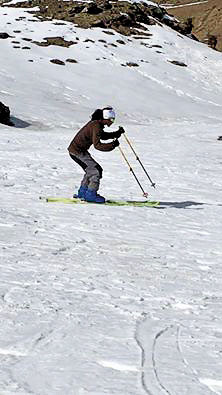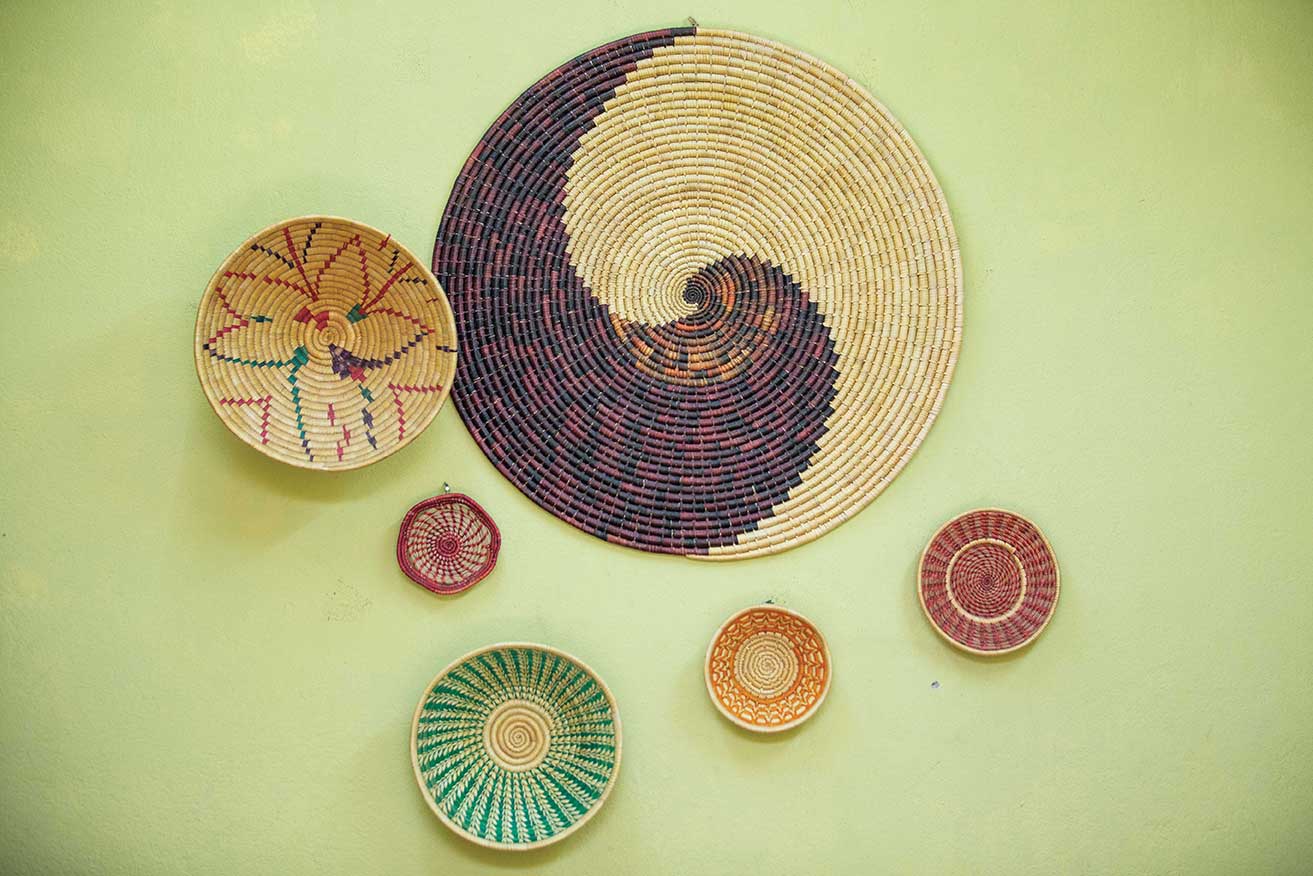Ski mountaineering is a skill that can prove invaluable to the mountain guides of Nepal, but attaining this skill is not an easy task.

September 23, 2012, remains a tragic moment in the history of mountain climbing in Nepal. A massive avalanche hit Manaslu early that fateful morning and killed 11 climbers at Camp 3. Glen Plake, a pioneer in extreme skiing in America, survived the disaster. The Californian native, who is also an inductee into the US Ski and Snowboard Hall of Fame, was in his tent at 6,800 meters with his climbing partner Greg Costa when the tragedy struck. Plake and his friends Greg and Rémy Lécluse were attempting to become the first team to ski the world’s eighth highest peak without oxygen. The bodies of Greg and Rémy were never found. “I should not be here. Greg was sleeping next to me when the incident occurred. And now he is no more. The incident has left an indelible mark in my life,” Glen reminisced emotionally about the devastating event that left several dead and his two teammates missing, as we huddled around the fireplace at Humde in Manang.
Glen was in Nepal in November, along with a fellow ski instructor and the quality and test manager for ski equipment manufacturer Dynafit, Paul Matheiu Fristsch, to teach skiing to Nepali mountain guides. Six Nepali mountain guides took part in the training program that was organized at the Chulu Far East in Manang from November 19-27, 2015. The project, the first of its kind, was organized by Khumbila Samrakshan Prathisthan (KSP), in collaboration with Jean Michel Jorda, Nepal Mountaineering Association, and Nepal Ski Association.
The “Nepali Guide Project”, an idea with the objective of imparting ski training to Nepali mountain guides, was born during a meeting between Jean Michel Jorda, a French documentary film maker, and Zimba Zangbu Sherpa, erstwhile President of Nepal Mountaineering Association, and President of KSP, during the 60th Jubilee Celebration to commemorate the ascent of Mount Everest. The initiative, a culmination of three years of planning, created a lot of stir among the French media. Sandra Stavo-Debauges, a French journalist, accompanied the team to Manang to document the training program, and Jean Michel Jorda has shot a 52-minute film showcasing the event to be aired on French television. Ski equipment manufacturing companies like Dynastar, Julbo, Leki, and Plum supported the program by providing skis, boots, and other equipment.
The project, the first of its kind in the Nepal Himalaya, is an attempt to provide our Nepali guides an extra skill set to become better mountain professionals. Ironically, Nepal has only a few mountain guides who have been recognized by the IFMGA (International Federation of Mountain Guides Association) and UIAA (Union International des Associations d’Alpinisme, also known as International Climbing and Mountaineering Federation), even though it is the birthplace of Himalayan legends like Tenzing Norgay and Appa Sherpa, and home to numerous climbers who have set world records in the field of mountain climbing.
 As per standards set by IFMGA and UIAA, a professionally certified guide has to accomplish the highest level of certification in three disciplines—rock, ice, and ski mountaineering—before being endorsed as an international guide. Our mountain guides are quite adept at rock and ice climbing, however, they lack in the third discipline. Among the handful of Nepalis who have received international accreditation, only one person (who trained in France) has been professionally certified in all three disciplines. The rest have trained in Nepal, and have qualified without specializing in ski mountaineering.
As per standards set by IFMGA and UIAA, a professionally certified guide has to accomplish the highest level of certification in three disciplines—rock, ice, and ski mountaineering—before being endorsed as an international guide. Our mountain guides are quite adept at rock and ice climbing, however, they lack in the third discipline. Among the handful of Nepalis who have received international accreditation, only one person (who trained in France) has been professionally certified in all three disciplines. The rest have trained in Nepal, and have qualified without specializing in ski mountaineering.
Ski mountaineering adds another dimension to the professional capability of a mountain guide. Equipped with skis, a high altitude guide can navigate the treacherous mountain terrain filled with crevasses with relative ease compared to traveling on foot. And, with new technological innovations, they not only travel downhill effortlessly, but also ascend uphill quite comfortably on skis fitted with skins. “I was on Manaslu as a climbing doctor with Russel Bryce’s team in 2012, and I saw Glen and his friends ski up and down the mountain. It took us a long time to ascend the mountain, but they were doing it within minutes without exerting too much energy,” shared Dr. Nima Namgyal, a wilderness medical doctor. The capacity to ski provides a guide with an extra skill set for survival and security in the mountains. During the April earthquake, and in the past, we have experienced disasters in the mountains, and lives have been lost in these tragic events. A guide with the ability to ski up and down the mountain could play a big role in mountain disaster preparedness, and act as a first responder during such mishaps. The extra advantage in navigation and time saving tool that he possesses could decrease fatalities and save lives.
Skiing is an expensive sport, which is aggravated by the fact that the sport is only possible in Nepal at altitudes above 5,000 meters. Though Nepal is renowned the world over for its lofty snow covered mountains, skiing has been confined to extreme feats like Yuichiro Miura’s 4,200 feet vertical descent from South Col in 1970, documented in the film, “The man who skied down Everest”, and the descent of Everest via South Col route by Davo Karnicar in 2000. Few companies have tried to introduce commercial skiing; unfortunately, it has not gained any momentum. The lack of resorts, instructors, and ski lifts, further enhanced by logistical challenges, makes ski training a luxury few Nepali guides can afford. However, with the advent of this program, the step towards providing a complete training curriculum, including ski mountaineering, does not seem a distant possibility.
Plake, an active member of Professional Ski Instructors of America, was of the opinion that with access to proper training, Nepali guides could easily achieve the highest level of expertise in ski mountaineering as well. The groundbreaking training in Manang is a move towards the right direction in empowering Nepalis to be better professionals. KSP, the non-profit organization that initiated the project, is committed to continuing the program with the vision to promote safety in the mountains with support from stakeholders. Glen also hopes to continue the program and build a legacy to honor his friends who perished on Manaslu. A seed has been planted, and with a little nurturing a few years down the line, we could have professional ski mountain guides in Nepal. Only time will tell.











